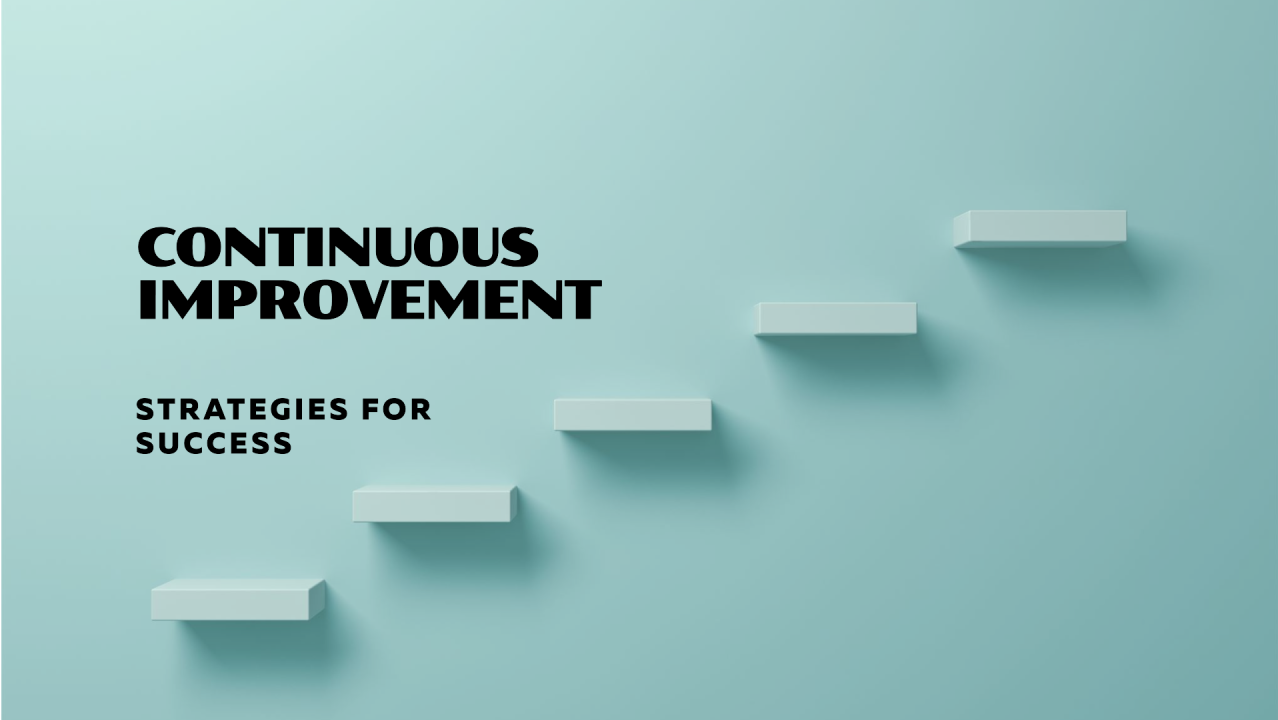
Achieving Continuous Improvement: Strategies for Success
Amruthajith Vasu-B.Tech, PMI-PMP ?, PMI-RMP ?
Corporate Trainer & Project Engineer | Enhancing Project Efficiency and Team Performance
Continuous improvement (CI) is a long-term approach to work that systematically seeks to enhance products, services, or processes over time. By focusing on small, incremental changes, businesses can gain significant long-term improvements. Whether in manufacturing, service industries, or business management, continuous improvement fosters innovation, enhances productivity, and boosts competitiveness.
Here’s a guide to understanding and implementing continuous improvement effectively.
1. Understanding Continuous Improvement
Continuous improvement is rooted in the idea that even the best processes, systems, or services can be improved. This philosophy originates from the Japanese concept of Kaizen—which means “change for the better.” At its core, CI emphasizes that all team members contribute ideas for improvement, regardless of their role.
The goal is to make incremental changes regularly, which can lead to substantial improvements over time. Unlike major overhauls or disruptive innovations, CI focuses on small, manageable improvements that are often more sustainable in the long run.
2. Why Continuous Improvement Matters
Organizations that adopt CI create a culture of engagement and innovation. This approach offers several key benefits:
3. Key Principles of Continuous Improvement
Successful continuous improvement efforts are built on several foundational principles:
4. Steps to Achieve Continuous Improvement
1. Set Clear Objectives
Define what you want to achieve through continuous improvement. Objectives could be improving customer satisfaction, reducing production time, or enhancing product quality. Clear goals provide a roadmap for your improvement efforts.
2. Engage Employees
Involve employees in the process by encouraging them to share ideas for improvement. This can be achieved through regular team meetings, suggestion boxes, or even formal innovation programs. Recognizing and rewarding employee contributions can further foster a culture of continuous improvement.
3. Use the PDCA Cycle
The PDCA (Plan-Do-Check-Act) cycle is one of the most widely used methodologies for continuous improvement:
领英推荐
4. Leverage Data and Metrics
Track progress using key performance indicators (KPIs). For example, in a manufacturing process, you might track cycle time, defect rates, or customer returns. Data helps to identify whether improvements are having the desired effect and where additional adjustments might be needed.
5. Encourage Continuous Learning
Provide training and development opportunities for employees to acquire new skills and knowledge. Learning not only helps individuals grow professionally but also equips them to contribute better to the organization’s continuous improvement goals.
6. Review and Reflect
Regularly review the progress of your continuous improvement efforts. Reflect on what’s working, what needs adjustment, and what can be done next. This creates a feedback loop that ensures the organization remains on a trajectory of ongoing improvement.
5. Challenges in Achieving Continuous Improvement
While the benefits of continuous improvement are significant, implementing it can present challenges:
6. Case Study: Toyota’s Kaizen Philosophy
One of the most notable examples of continuous improvement is the Toyota Production System (TPS), which incorporates Kaizen into its core operations. Employees at every level of Toyota are encouraged to suggest and implement small changes to improve efficiency, reduce waste, and enhance product quality. The result has been a production process that is globally recognized for its efficiency, quality, and innovation.
7. The Role of Technology in Continuous Improvement
Modern technology can significantly enhance continuous improvement efforts. Tools like automation, artificial intelligence, and data analytics make it easier to monitor processes, gather data, and identify improvement opportunities. For example, predictive analytics can highlight inefficiencies before they become significant issues, allowing organizations to proactively address them.
Additionally, project management and collaboration tools streamline communication and workflow, making it easier for teams to collaborate on improvement efforts.
8. Conclusion
Achieving continuous improvement is a journey rather than a destination. It requires commitment, collaboration, and a mindset focused on incremental growth. Organizations that embed continuous improvement into their culture can consistently innovate, meet customer needs, and maintain a competitive edge. By setting clear objectives, leveraging data, engaging employees, and embracing small, consistent changes, businesses can achieve sustained success in an ever-evolving landscape.
Continuous improvement isn’t just a process—it’s a philosophy that drives excellence.